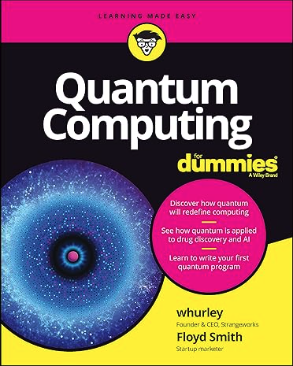Quantum Programming - Part 2
In my previous post about quantum programming, I tried my first exploration of this new era that is coming: a brief view of the theory behind that and what exists to support the programming discipline. For this post, I've dug a bit more and I used the book Quantum Computing For Dummies as the main reference. Here I'm going to add my notes of some insights given by the book.

Main ideas
- Qubits is the basic unit of information used to encode data in quantum computing. It has three kind of position: 0, 1 and both in the same time (0 AND 1). It is built around the coherent metter, then they can be placed in a superposition state, can be entangled and can tunel.
- Superposition is the state that represent any state that is a linear combination of 0 and 1. That position is related with the probability of measuring the qubit in either state when a measurement is made
- Entanglement is the correlation amount different particles, even they are distant each other, and the result of the measure is linked to the result of the particles in the group
- Tunneling is the phenomenon when a particle is able to penetrate through a barrier that is higher in energy than the particle's kinetic energy.
- Coherence: when object’s wave property is split in two, and the two waves coherently interfere with each other. In practical terms, it means a piece of matter can keep coherent even influenced of a third part, placed into entanglement and tunneled from one point to another.
- Measure: the state of the quibit must be done measure after the processing. It is a challenge because even the measurement process can interfer in the result.
Types of quantum computing
- quantum computing emulator/simulator: it is an environment that pretend to be a quantum environment where you can try the quantum effect. A list of the more important simulators you can see here. Another more extense you can see here.
- Quantum-inspired computing is a solution that means use classical technology appling aspects of quantum physics.
- Quantum annealing is a solution that use the lowest energy states of the superconducting loops and be there for all the process, avoiding interferences. It is focus on optimization problems (approximate answer), it means that it can solve any problems that can be stated as a Quadratic Unconstrained Binary Optimization (QUBO). The vendor is D-wave. It uses 5k-plus qubits and has a learning curve considered moderate (good place to start).
- Universal quantum computing: it works for any operation and can be simulated mathematically. While annealing modality is based only on supercondictiong, the universal can also be: trapped ions, photonic, code/neutral atoms and silicon spin [1][2]. It can model mathematically and the research activity is robust. It works for optimization problems and much more. Use around 100 quibits and has a robust entanglement characteristic. The learning curve is hard. This is a gate-based quantum computing: it is based on gates to manipulate quibits. [3][4].
- Modality vs Company
- Trapped Ions (slow but achieve high circuit depth; great quantum power due to their all-to-all entangleability ): Quantinum, IONQ, Universal Quantum
- Superconducting (the qubit is more manageble - gates, annealers): IBM, Google, OQC, AWS Braket
- Photonics (long coherence time, easy to entangle with each other, hard to combine into two two-qubit logic gates): PsiQuantum, Xanadu, Quandela
- Code/neutral atoms (similar to trapped ion but magnetic field): Intem, Silicon Quantum Computing
- Silicon Spin (similar to transmin quibits but use a single atom): Pasqal, QuEra, ColdQuanta
Programming
When you decide start the first steps you have to be aweare of some points of the environment you will use: the framework (e.g. Cirq, Qiski), the simulator, the knowledge of quantum gates (basic building blocks of quantum programming), algorithm and you have to have some programming skills.
Quantum algorithm have been created to solve optimization problems that is hard to solve using classic solutions. Some examples of category of algorithm it has a better result are Cryptography, Search and Optimization, and Machine Learning. A huge list of these algorihtms you can se here.
Access provider
Nowadays there are providers to support the use of quantum technology. AWS, Microsoft and Google offer access to quantum computing options. Other providers are: Adnostiq, classiq, QBraid, D-Wave, QCWare, Strageworks, Zapata.
- AWS offer the Amazon Braket with options of technology trapped ion (IonQ), superconducting (OQC, Rigetti) and cold atoms (QuEra).
- Microsoft offer Azure Quantum with options of technology trapped ion (IonQ, Quantinuum), neutral atom (Pasqal), superconducting (Quantum Circuits, Rigetti)
- Google offer Google Quantum AI with options of technology trapped ion (IonQ), superconducting (Google)
Conclusion
It was a good book to give more concepts and history about the quantum computing. Algo,it gives good references and overview about the providers and technology. From this book I have more context to go to the next step: HANDS-ON :D